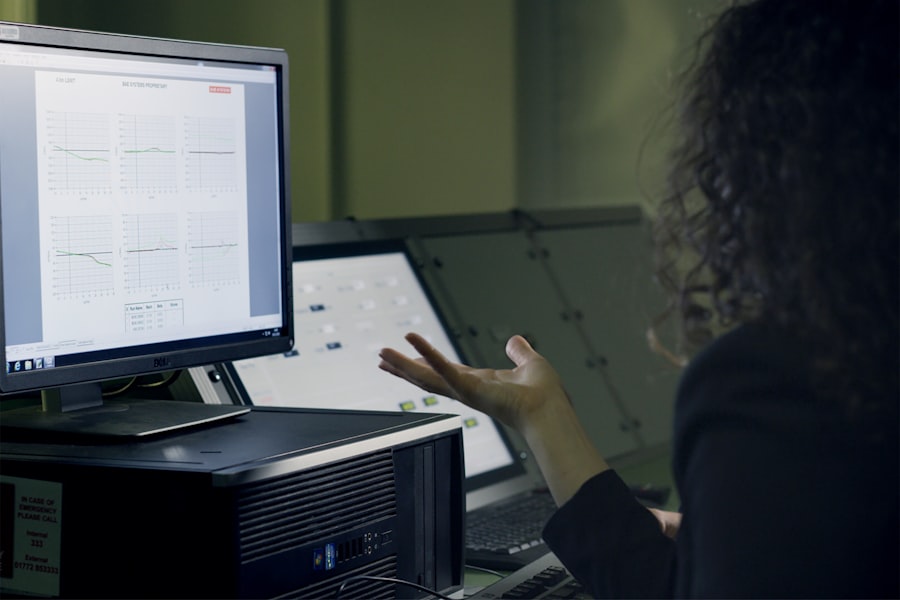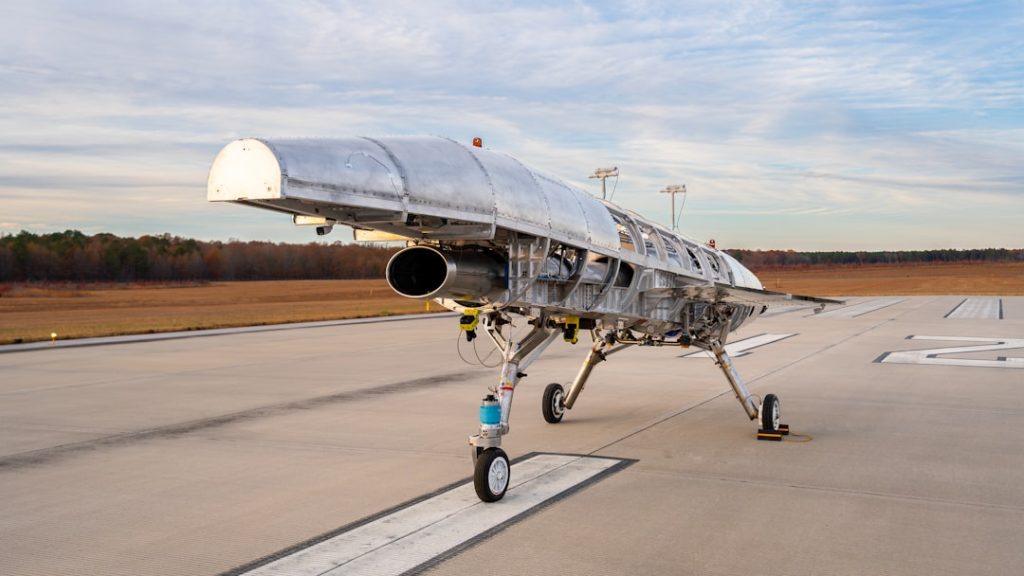Aerospace engineering is a multifaceted discipline that encompasses the design, development, and production of aircraft and spacecraft. This field is not merely confined to the creation of vehicles that traverse the skies or the vastness of space; it also involves a deep understanding of aerodynamics, materials science, structural analysis, propulsion, and avionics. The roots of aerospace engineering can be traced back to the early 20th century, with pioneers like the Wright brothers laying the groundwork for powered flight.
Since then, the field has evolved dramatically, driven by technological advancements and an increasing demand for efficient air travel and space exploration. The significance of aerospace engineering extends beyond mere transportation. It plays a crucial role in national defense, satellite communications, weather forecasting, and even global positioning systems (GPS).
As the world becomes more interconnected, the need for innovative aerospace solutions grows. Engineers in this field are tasked with addressing complex challenges such as improving fuel efficiency, enhancing safety measures, and developing sustainable technologies. The integration of cutting-edge technologies like artificial intelligence and advanced materials is reshaping the landscape of aerospace engineering, making it an exciting and dynamic field for both current and future engineers.
Key Takeaways
- Aerospace engineering involves the design, development, and testing of aircraft and spacecraft.
- Materials and manufacturing innovations play a crucial role in improving the performance and efficiency of aerospace vehicles.
- Electric propulsion systems are becoming increasingly popular in aerospace engineering due to their environmental benefits and cost-effectiveness.
- Autonomous systems and artificial intelligence are revolutionizing aerospace engineering by enhancing the safety and efficiency of aircraft and spacecraft.
- Space exploration and colonization present exciting opportunities for aerospace engineering, with the potential to expand human presence beyond Earth.
Materials and Manufacturing Innovations
The evolution of materials used in aerospace engineering has been pivotal in enhancing the performance and safety of aircraft and spacecraft. Traditional materials such as aluminum and steel have been largely supplemented by advanced composites and alloys that offer superior strength-to-weight ratios. Carbon fiber reinforced polymers (CFRP), for instance, have become increasingly popular due to their lightweight properties and resistance to corrosion.
These materials not only contribute to fuel efficiency but also allow for more complex shapes and designs that were previously unattainable with conventional materials. Manufacturing processes have also undergone significant transformations, particularly with the advent of additive manufacturing, commonly known as 3D printing. This technology enables engineers to create intricate components with reduced waste and shorter lead times.
For example, companies like Boeing and Airbus are utilizing 3D printing to produce parts for their aircraft, which not only streamlines production but also allows for rapid prototyping and customization. The ability to manufacture components on-demand can drastically reduce inventory costs and improve supply chain efficiency. Furthermore, innovations in manufacturing techniques such as automated fiber placement (AFP) and advanced welding methods are enhancing the precision and reliability of aerospace components.
Electric Propulsion Systems

Electric propulsion systems represent a paradigm shift in aerospace technology, offering a cleaner and more efficient alternative to traditional jet engines. These systems utilize electric power to generate thrust, significantly reducing greenhouse gas emissions and noise pollution associated with conventional propulsion methods. The development of electric propulsion is particularly relevant in the context of urban air mobility (UAM), where electric vertical takeoff and landing (eVTOL) aircraft are being designed for short-distance travel within urban environments.
One notable example of electric propulsion innovation is NASA’s X-57 Maxwell project, which aims to demonstrate the feasibility of electric flight through a modified Tecnam P2006T aircraft. The X-57 features multiple electric motors that drive propellers, showcasing how electric propulsion can enhance efficiency while maintaining performance standards. Additionally, companies like Joby Aviation and Archer are actively developing eVTOL aircraft that leverage electric propulsion technology to provide sustainable air taxi services.
As battery technology continues to advance, the potential for electric propulsion systems in commercial aviation becomes increasingly viable, promising a future where air travel is not only faster but also more environmentally friendly.
Autonomous Systems and Artificial Intelligence
| Metrics | Autonomous Systems | Artificial Intelligence |
|---|---|---|
| Accuracy | High | High |
| Decision Making | Automated | Learned |
| Adaptability | Medium | High |
| Complexity | High | High |
The integration of autonomous systems and artificial intelligence (AI) into aerospace engineering is revolutionizing how aircraft are designed, operated, and maintained. Autonomous flight systems can enhance safety by reducing human error, which is a significant factor in aviation accidents. Advanced algorithms enable aircraft to make real-time decisions based on data from various sensors, allowing for more efficient navigation and obstacle avoidance.
For instance, Boeing’s autonomous cargo air vehicle (CAV) is designed to transport goods without human intervention, showcasing the potential for automation in logistics. AI is also playing a crucial role in predictive maintenance within the aerospace industry. By analyzing vast amounts of data collected from aircraft sensors during flights, AI algorithms can identify patterns that indicate potential failures before they occur.
This proactive approach not only enhances safety but also reduces downtime and maintenance costs. Companies like Airbus are leveraging AI-driven analytics to optimize fleet management and improve operational efficiency. As these technologies continue to evolve, the prospect of fully autonomous commercial flights may soon become a reality, fundamentally changing the landscape of air travel.
Space Exploration and Colonization
The quest for space exploration has captivated humanity for decades, leading to remarkable achievements such as landing on the Moon and sending rovers to Mars. Aerospace engineering plays a critical role in these endeavors by developing the technologies necessary for safe and efficient space travel. The recent resurgence of interest in space exploration has been fueled by both governmental agencies like NASA and private companies such as SpaceX and Blue Origin.
These entities are pushing the boundaries of what is possible in space travel, with ambitious plans for missions to Mars and beyond. Colonization of other celestial bodies presents unique challenges that require innovative engineering solutions. For instance, creating habitats that can sustain human life on Mars involves addressing issues such as radiation protection, life support systems, and resource utilization.
The concept of in-situ resource utilization (ISRU) is gaining traction, which involves using local materials to produce water, oxygen, and fuel on Mars rather than transporting everything from Earth. This approach not only reduces mission costs but also increases the feasibility of long-term human presence on other planets. As we look toward the future of space exploration, aerospace engineers will be at the forefront of developing technologies that make interplanetary colonization a reality.
Sustainability and Environmental Impact

As concerns about climate change intensify, the aerospace industry faces increasing pressure to adopt sustainable practices. The environmental impact of aviation is significant; commercial flights contribute approximately 2-3% of global carbon emissions. In response, aerospace engineers are exploring various strategies to mitigate this impact through sustainable aviation fuels (SAFs), improved aerodynamics, and more efficient flight operations.
SAFs are derived from renewable resources such as plant materials or waste products and can significantly reduce lifecycle greenhouse gas emissions compared to traditional jet fuels. Moreover, initiatives aimed at improving air traffic management are being implemented to optimize flight paths and reduce fuel consumption. The implementation of advanced air traffic control systems that utilize real-time data can lead to more efficient routing of aircraft, minimizing delays and unnecessary fuel burn during flights.
Additionally, research into hybrid-electric propulsion systems aims to combine traditional engines with electric power sources to further reduce emissions during flight operations. The commitment to sustainability within aerospace engineering is not just a trend; it represents a fundamental shift toward responsible innovation that prioritizes environmental stewardship alongside technological advancement.
Hypersonic Flight Technology
Hypersonic flight technology refers to travel at speeds greater than Mach 5 (five times the speed of sound), which has long been a goal within aerospace engineering due to its potential applications in both military and civilian sectors. The ability to travel at hypersonic speeds could revolutionize global travel by significantly reducing flight times; for example, a trip from New York to London could take less than an hour instead of several hours with conventional aircraft. However, achieving hypersonic flight presents numerous technical challenges related to aerodynamics, materials science, and thermal management.
One prominent example of hypersonic research is the U.S. Air Force’s X-51 Waverider program, which successfully demonstrated sustained hypersonic flight using scramjet technology. Scramjets operate by compressing incoming air before combustion occurs at hypersonic speeds, allowing for efficient propulsion without the need for heavy rocket engines.
The implications of successful hypersonic flight extend beyond passenger travel; military applications include rapid response capabilities for defense operations and advanced reconnaissance missions. As research continues in this area, hypersonic technology holds promise for transforming both commercial aviation and military strategy.
Future Challenges and Opportunities
The future of aerospace engineering is filled with both challenges and opportunities as the industry navigates an ever-evolving landscape shaped by technological advancements and societal demands. One significant challenge lies in balancing innovation with regulatory compliance; as new technologies emerge—such as electric propulsion systems or autonomous flight—regulatory frameworks must adapt to ensure safety without stifling progress. Collaboration between engineers, policymakers, and regulatory bodies will be essential in creating an environment conducive to innovation while maintaining high safety standards.
Additionally, workforce development poses another challenge as the industry seeks skilled professionals capable of navigating complex technologies like AI and advanced materials science. Educational institutions must evolve their curricula to prepare students for careers in aerospace engineering that increasingly require interdisciplinary knowledge spanning multiple domains. Opportunities abound for engineers who can harness emerging technologies while addressing pressing global issues such as climate change and resource scarcity.
The future landscape of aerospace engineering will be defined by those who can innovate responsibly while meeting the needs of society in an increasingly interconnected world.


